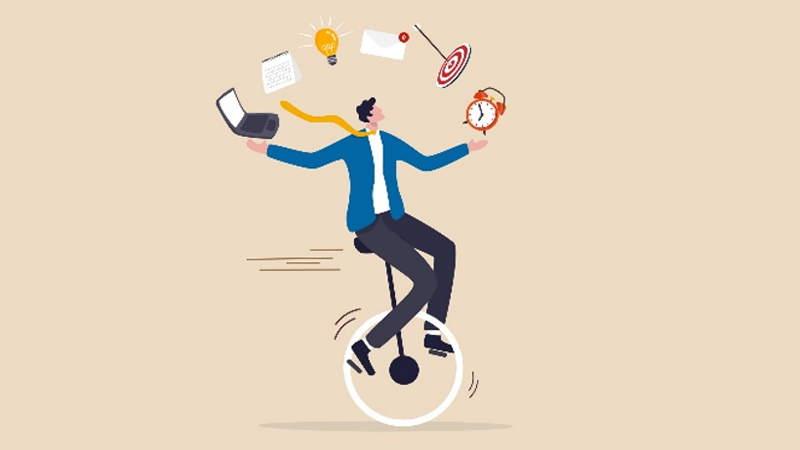By Karim Radwan
July 19, 2023
Quickly drafted, easy to share, more formal than phone messaging, once invented, emails quickly became our favored way of communicating. It is as close to perfection as a communication tool can get.
Usually, us humans tend to overuse and abuse good things, and of course, emails are no exception.
Globally, a staggering 269 billion emails are sent each day and there are currently just over 3.7 billion email users worldwide.
Most likely your job description is not “write and reply to emails”. Hence, the majority of the time you spend on emails will bring you little to no reward. You do not often hear of somebody being promoted thanks to the emails she/he drafted or a great discovery resulting from a reply to an email.
While some emails are of crucial importance and others simply mandatory, wouldn’t it be great if you could cut the number of less (not at all) important ones drastically?
You may not notice it, but the time we spend on emails accumulates very swiftly. A study carried out by McKinsey, revealed that American workers spend 28% of their workday reading and answering emails, in average that is 2.6 hours a day for just over 100 emails (120) received per day.
Following some simple advice, most of my clients slashed the time spent on emails by more than 50% with truly little effort.
This article provides you with several tools to free yourself considerable time every day.
The Magic Formula
It is important to understand where this precious time disappears. The time you spend on emails can be broken down in two contributing factors–receiving and processing.
Time spent on emails = number of emails received x average time to process 1 email
The number of emails received is straightforward and often a neglected aspect of email management as people believe they only have control of the outflow of emails and not the inflow. Surely, they are deluded, and we will see why later in this article.
The time to process an email can be broken down into sub-factors. The time you take to file an email, the time you take to retrieve an email, the amount of time you spend returning to previously opened emails, and the time you spend choosing what unread email you will open next.
Most of these actions only take a few seconds, but multiplied by 120 emails a day, it can considerably hinder your productivity.
The goal is to reduce both factors (inflow and time to process) as much as possible. Let’s see how we can achieve this without putting in too much effort.
Stop Filing
Having 40 folders for your emails is like having 40 drawers at your desk. You will waste time filing and retrieving information will take you a lot of time.
Most precious information should not remain in your mailbox. Key information related to a specific date should be transferred in your calendar, tasks to be completed listed in your to-do-list/task management program, and important documents filed on your server.
The vast majority of personal organization books advocate for keeping things very simple.
I just have 2 folders in addition to my inbox. One folder “needs action”, one folder “need to chase”. They are quite self-explanatory.
I try to only go through my inbox twice a day at set times. If an email requires an action that takes less than two minutes, I do it immediately and leave it as a read email in my inbox. If it takes more than 2 minutes, I put it in the “needs action” folder to work on it after I reviewed my inbox.
When I send an email that requires an action from the recipient, I slide it in the “need to chase” folder. This way I can see in one folder all the pending replies I am expecting in the “need to chase” folder. This enables you to avoid going through your opened emails (or those marked as unread) to retrieve what needs your attention.
People may be reluctant to cut down the number of folders out of fear of losing precious information or paradoxically losing time retrieving it. You lose more time filing emails one by one with your mouse than retrieving them if you follow the upcoming advice outlined in this article.
Nowadays, the search functions of email providers are well designed, and you can retrieve emails easily. You can also highlight the most important emails.
To ensure you can retrieve emails easily and choose which ones to focus on without even opening them, adopt the habits below.
1 New Topic = 1 New Thread of Emails
People like to click reply all on messages that include all the desired recipients. This is fine as long as you change the title of the email and do not include the previous conversation.
Receiving a price increase notification for a certain product in an email titled “Christmas afterwork party” can be somewhat confusing.
It takes less than 2 seconds to change the title of the email, but not changing it will make you lose a lot of time in the future, and you also run the risk of your email remaining unread as the title may not illustrate the importance of its content.
Likewise, avoid breaking chains of email by creating a new email to contribute to an existing exchange of mails (especially if you change the title). Retrieving information in broken correspondence will consume time and energy that could be invested elsewhere.
Use Self-Explanatory Titles
Poor email titles are just as bad as the emails with titles from another thread of emails.
Sending an email titled “invoice”, “scan”, or “34t2452” (often when sent directly from a printer) can make you and your team lose a lot of precious time.
Take a few seconds to write the full title. Write “Scan ID speaker sustainable event” instead of “scan”. The few seconds invested can save you half an hour one year later, when you will be searching for the name of the speaker you had hired.
Complete titles also help recipients scan through unread emails and understand the content without opening them.
Add A Tag Word
I have witnessed many people plastering the word URGENT in various shapes and forms, full caps, red font, full cap red font, etc. Doing this for non-vital emergencies is just as productive as pulling the alarm in a train because you would like more time to finish reading your newspaper.
If something is urgent, you should use the phone to get direct feedback. You can later send an email summarizing key points if needed.
On the flip side, I have seen very few people label their emails as “not urgent” or “Just FYI”, and this helps to prioritize when you are scanning through an inbox with tens of unread emails.
Adding tags to help recipients know what to do with your email will help your team’s organization and ultimately yourself.
Congratulations! If you have read this far, you have the tools to cut 25% of the time spent on your emails (10% of the time is wasted on re-reading through inboxes). Now let’s see how to cut another 25% by reducing the number of emails you receive.
Write In a Way That Avoids Back and Forth Exchanges
Take the habit of drafting emails that limit back and forth exchanges. Avoid this type of conversations that I have witnessed far too often:
You: Hey Jim, I’d like to discuss the report you shared yesterday.
Jim: Sure, happy to explain over the phone.
You: Great, can I call you at 2 p.m.?
Jim: Unfortunately, this does not work for me how about 3 p.m.?
You: I can’t at 3 p.m. how does your day look like on Thursday?
….
You will end up having sent 5-6 messages and received the same number in return to arrange a simple call. The situation worsens if other people are copied on this exchange as it multiplies the number of useless emails in your company (we will see how to address this in the next section).
You could have written the initial email as follows:
You: Hi Jim, how about a call either at 10 a.m. or 2 p.m. Tuesday or Thursday to discuss the end of year report? If you are not free on those days, please suggest two alternatives.
Jim: Thursday 2 p.m. works. I will be waiting for your call.
To avoid this pitfall, take few seconds to ask yourself if the email is complete before pressing send.
Congratulations! You just divided by 5 the number of emails related to this meeting in your inbox. If you and your colleagues apply this principle to all emails, you will have a massive reduction in the number of emails in your company.
Define Rules with Your Team For CCs
Establish some ground rules on who should be copied on what. There is often no need to copy five people from the same team who sit one meter far from each other. Discuss with your team and set some clear rules, such as Tom is excluded from any email relating to payments, Nicole is excluded from all admin-related emails.
We have all been copied in endless exchanges that are of absolutely no interest or concern to us. While it may not take that long to figure out these emails do not concern you, they still interrupt you, this wasted time cumulates as you are getting thousands of emails a year, and it has zero added value for you or your company.
If you are not the decision maker, approach your manager and suggest some ground rules that will save them time and decrease the inflows in their inbox. My bet is that your manager will listen to you attentively.
Click Reply Vs Reply All
Refrain from clicking “reply all” unless all people copied need the information you are sharing.
For example, do not reply all to say thank you unless you wish to publicly thank a person and highlight their achievement.
Imagine you remove 15 people who are copied in an email, sparing them your “thank you” message and the “you are welcome” reply. By simply clicking “reply” instead of “reply all” you just saved your company a total of 30 useless emails crowding your colleagues’ inboxes.
Do not be deceived by the simplicity of these recommendations. They can make a big difference in the number of emails you receive and boost your productivity. The number of useless emails accumulates extremely fast and by the end of the year, adds up to entire days spent on worthless efforts.
I guess nobody is fond of treating emails, so make sure you apply these rules religiously and you will have a lot of time to do what you are actually paid for.
Karim Radwan
Founder of Impactus Consulting
Karim Radwan is a self-directed project management professional with extensive experience in both the private and the public sectors. Domains of work include banking, FMCG, and development projects. Regardless of the industry, Karim witnessed high potential for improvement in project management methodologies, productivity enhancement and crisis management. His taste for entrepreneurship made Karim decide to establish IMPACTUS Consulting in Dubai to help companies around the world adapt, innovate, and prosper in shifting environments.
Browse IIL’s AgilePm Foundation Courses here!
Disclaimer: The ideas, views, and opinions expressed in this article are those of the author and do not necessarily reflect the views of International Institute for Learning or any entities they represent.



